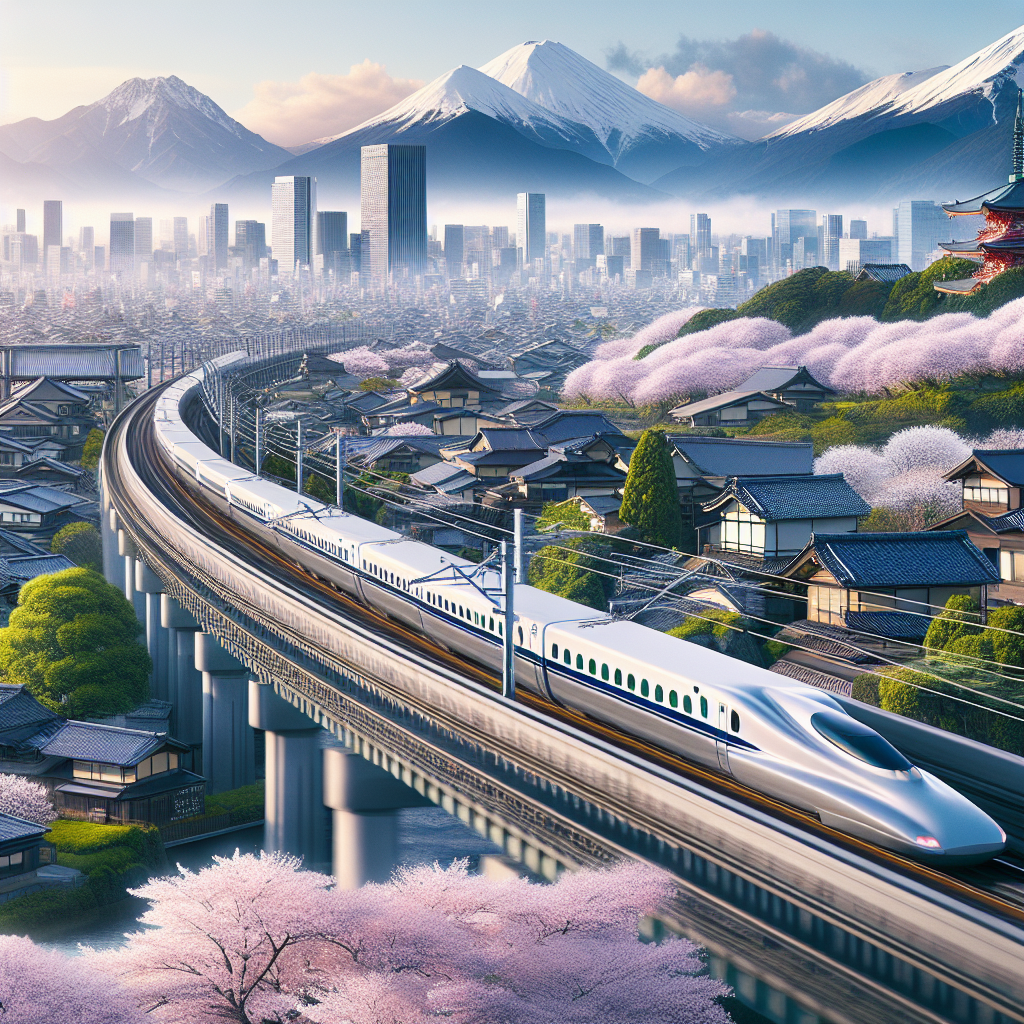The Bullet Train Experience: How to Travel Japan in Speed and Style
Japan, a country renowned for its harmonious blend of historical tradition and cutting-edge innovation, offers one of the most efficient, punctual, and sophisticated rail networks in the world. The Shinkansen, or bullet train, is a symbol of Japanese efficiency and technological advancement, providing a unique travel experience that combines speed, comfort, and impeccable service. For travelers looking to explore the breadth of Japan’s scenic beauty and urban sophistication, the bullet train is an unrivaled mode of transportation. In this article, we delve into the bullet train experience, offering insights on how to travel Japan in both speed and style.
The Genesis of the Shinkansen
The Shinkansen network was inaugurated in 1964, connecting Tokyo and Osaka, just in time for the Tokyo Olympics. It was the world’s first high-speed train service, and since then, it has expanded to connect most of Japan’s major cities at speeds of up to 320 km/h (198 mph). The bullet train’s development was a monumental engineering achievement, setting the standard for high-speed rail worldwide.
The Shinkansen Experience: Speed and Efficiency
One of the most striking features of the Shinkansen is its punctuality. Delays, if any, are usually measured in seconds. The network’s reliability and frequency make it an incredibly efficient way to travel across Japan, significantly reducing travel time between cities. For instance, the trip from Tokyo to Kyoto takes just over 2 hours, a journey that would take double the time by car.
Traveling at speeds of up to 320 km/h, passengers can enjoy the changing landscapes through large windows, from the urban sprawl of Tokyo to the mountainous terrain of central Japan, and onto the serene beauty of the western coast. Despite the high speeds, the ride is remarkably smooth and quiet, testament to the precision engineering of the Shinkansen trains.
Style and Comfort
Beyond speed and efficiency, the Shinkansen is known for its high levels of comfort and service. There are generally two to three classes of service: Ordinary, Green (first class), and in some cases, Gran Class (luxury class). Even in Ordinary class, the seats are spacious and comfortable, with ample legroom, reclining features, and power outlets. Green Class offers even more space, enhanced seating, and a quieter environment. For the ultimate luxury, Gran Class provides full-flat seats, gourmet meals, and complimentary drinks, akin to business class on an international flight.
Facilities on board include clean restrooms, vending machines, and, on some trains, free Wi-Fi. Additionally, there’s the Ekiben, or train bento boxes, available at stations or on the train, offering a delicious taste of regional cuisine.
Navigating the Network
Purchasing tickets for the Shinkansen can be done at station ticket offices, vending machines, or online. For tourists, the Japan Rail Pass offers incredible value, allowing unlimited travel on most Shinkansen trains (except the fastest Nozomi and Mizuho services) for a set period of 7, 14, or 21 days. It’s essential to reserve seats, especially during peak travel seasons, to ensure a seamless travel experience.
The Environmental Aspect
The Shinkansen is not only a marvel of engineering and design but also an environmentally friendly option for long-distance travel. Compared to air travel or driving, the bullet train significantly reduces carbon emissions, making it a sustainable choice for exploring Japan.
FAQs
Q: How do I purchase a Japan Rail Pass?
A: The Japan Rail Pass can be purchased online before your trip to Japan. You’ll receive an exchange order, which you will exchange for the actual pass upon arrival in Japan at a JR service counter.
Q: Can I use the Japan Rail Pass on all bullet trains?
A: The Japan Rail Pass is valid on most Shinkansen trains, except for the Nozomi and Mizuho services. It’s also valid on other JR trains, including local, express, and limited express trains.
Q: Are there luggage restrictions on the Shinkansen?
A: There are no strict luggage restrictions, but passengers are encouraged to bring only what they can carry due to limited storage space. Some trains have overhead storage shelves and designated luggage areas.
Q: How can I reserve a seat on the Shinkansen?
A: Seat reservations can be made at any JR ticket office in Japan or through the official JR reservation online service. With a Japan Rail Pass, seat reservations are free of charge.
Q: Is there dining on board?
A: Yes, most Shinkansen trains have a cart service offering drinks and snacks. For a more substantial meal, passengers can purchase Ekiben at the stations before boarding.
The bullet train experience is an embodiment of Japan’s commitment to harmony between tradition and modernity, efficiency, and attention to detail. Whether you’re traveling for business or leisure, the Shinkansen offers a journey that is as memorable as the destinations it connects. It’s an unparalleled way to experience the diversity and beauty of Japan, all while moving at the speed of light.
